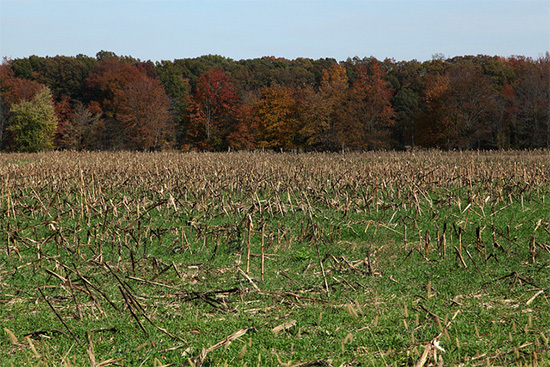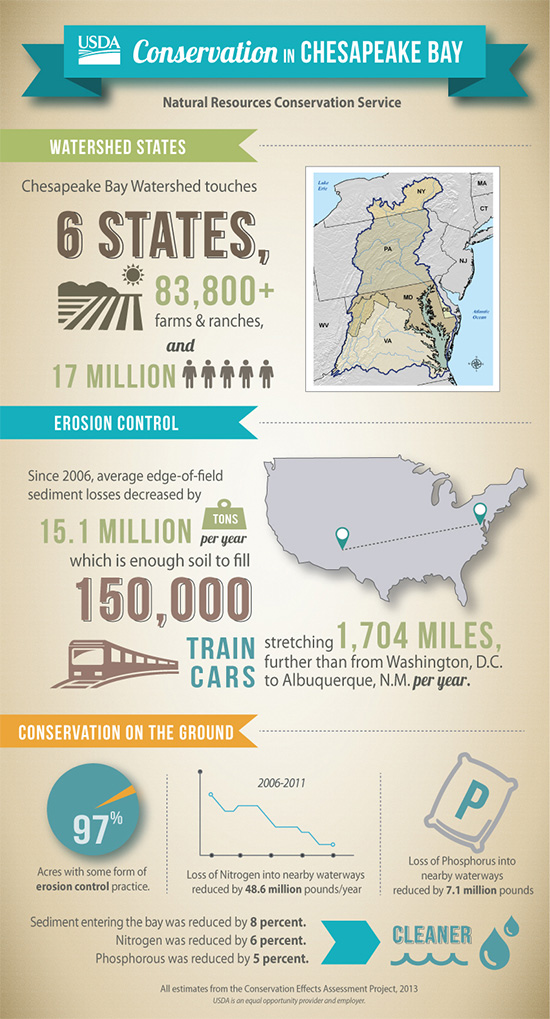Tracking conservation can credit farmers, ensure states meet water quality goals
Bay Program partners work to streamline the conservation reporting process.
Chesapeake Bay Program partners have improved how states track on-farm conservation, helping farmers get credit where it is due and ensuring states know what has been done to meet their pollution reduction goals.

Under the Chesapeake Bay Total Maximum Daily Load (TMDL), or “pollution diet,” each state in the watershed must report their annual progress in promoting agricultural conservation. To streamline this process, the U.S. Geological Survey (USGS) has integrated state and federal data about what conservation practices have been put in place, where. Delaware, Pennsylvania and West Virginia used this new dataset to report their conservation practices in 2012, improving their ability to track their progress toward improving water quality in rivers, streams and the Chesapeake Bay.
While agricultural runoff is one of the watershed’s leading sources of nutrient and sediment pollution, on-farm conservation can lower the amount of nitrogen, phosphorous, sand and silt washing off of farmland. Conservation tillage, cover crops and nutrient management planning can also reduce a farm’s operating costs and improve a farm’s production.

Image courtesy U.S. Department of Agriculture
Indeed, a recent U.S. Department of Agriculture (USDA) report on the impact of cropland conservation in the region showed that conservation measures—a number of them put in place voluntarily and made possible through the Farm Bill—have improved and protected water quality and soil health. Published as part of the USDA’s Conservation Effects Assessment Project (CEAP), the report, which uses data collected between 2003 and 2006 and in 2011, showed a five, six and eight percent drop in phosphorous, nitrogen and sediment runoff into the Bay. While Chesapeake Bay Program partners work closely with the USDA, this particular report is not part of the Bay Program's TMDL-related tracking efforts.
“The good work of Chesapeake Bay landowners has generated substantial progress in a short period of time, but more needs to be done,” said Agriculture Secretary Tom Vilsack in a media release. “It is critical that Congress act now to pass a Farm Bill that provides the full array of programs and incentives to build on these efforts.”
Learn more about the reporting of conservation practices in the watershed or read about the impacts of conservation practices on cropland in the region.

Comments
There are no comments.
Thank you!
Your comment has been received. Before it can be published, the comment will be reviewed by our team to ensure it adheres with our rules of engagement.
Back to recent stories